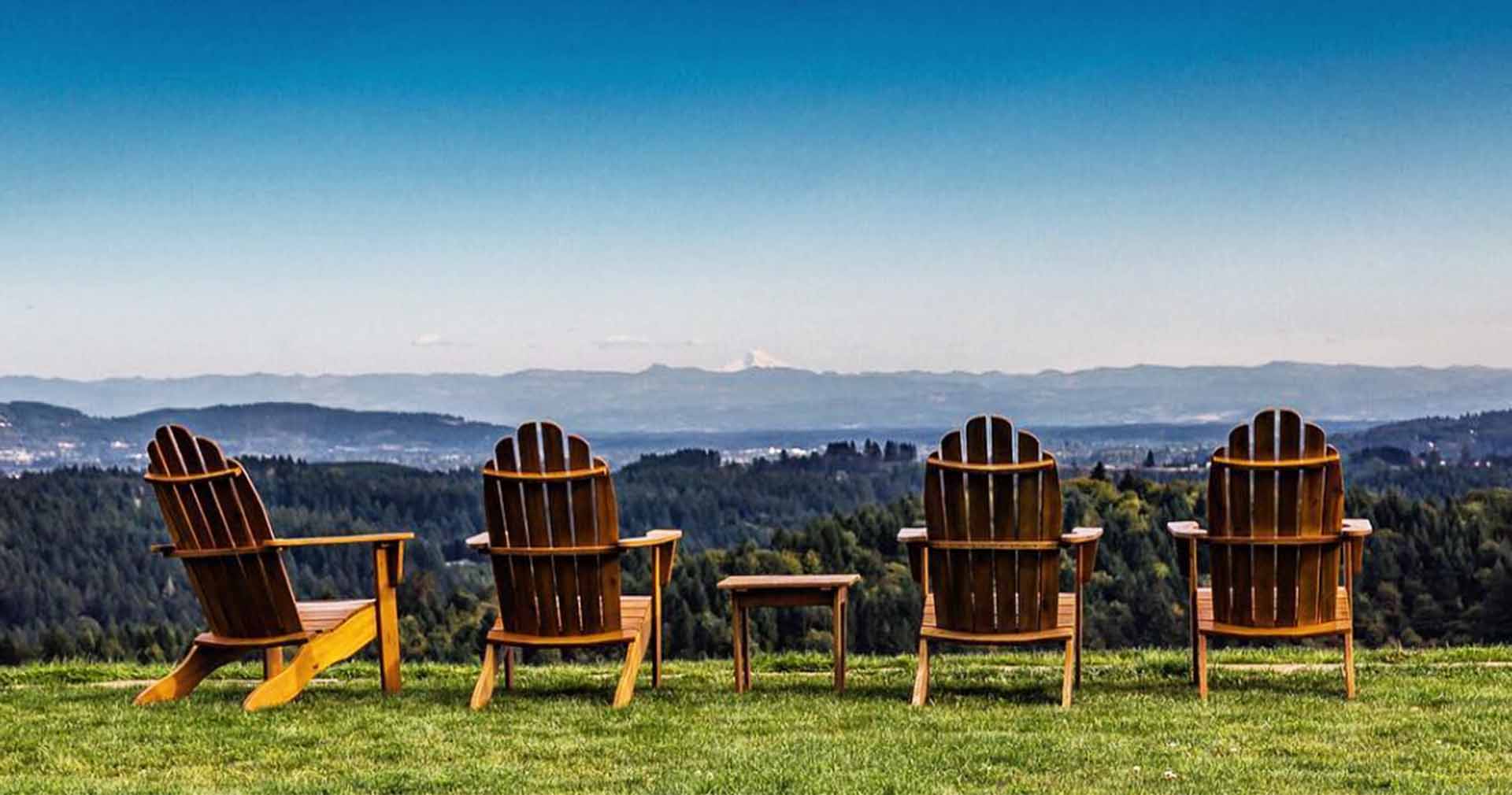Reverence and Sanctity
In August 2021 the European Union (EU) granted Oregon’s Willamette Valley Protected Geographical Indication (PGI).
This designation makes the Willamette Valley the second American wine producing region to attain the coveted status. Napa Valley was first in 2007.
A distinct mark of authenticity and regional quality, the Willamette Valley’s PGI designation caps a near-20-year effort and speaks to a collective reverence and sanctity of place held by growers and producers in the region.
Original Land Stewards
In thanking those who worked toward this global recognition, it is imperative to also acknowledge the region’s original land stewards who sculpted this terrain and preserved components vital to the Willamette Valley’s unique terroir.
This land was a carefully designed and engineered ecosystem due to the stewardship of Kalapuyan Tribal peoples long before winemakers and even Euro-American explorers and settlers arrived in the Willamette region.
The valley evolved from a heavily forested regime into a mosaic of meadows, grasslands, oak savannah, and healthy forest over thousands of years and under the systematic ecological care of the Kalapuyans.
Kalapuya Tribal Peoples
Tribal peoples employed a sophisticated knowledge of plant ecologies that included medicinal properties.
The Kalapuya and other bands of the Columbia and Willamette rivers utilized bast fiber and wild flax to fish, craft twine, and weave baskets.
The Kalapuya were adept at pyroculture (deliberate and controlled burning) to expand valued plants and prairies.
Controlled burning practices generated ash for fertilizer, preserved oak groves, increased hazelnut production, decimated grasshopper populations, reduced insect damage, and improved deer and elk habitat.
The Kalapuya employed fire in deer and elk hunting, to reduce tree stress, and to remove undergrowth in oak groves making acorns more visible while stimulating a park-like tree culture.
Tribal women held important roles in controlled burns with female spiritual leaders signaling and leading fires throughout the season.
Transforming the Landscape
The Kalapuyans are notable among Oregon tribes for their unique semi-nomadic lifestyle that melded elements from both coastal and plateau cultures.
Their tribal homelands included inland valleys extending from the Coast range to the Cascades.
Between spring and summer, the Kalapuya roamed river valleys in pursuit of seasonal plants and game. They passed the winter’s rainy season in permanent multi-family lodges.
Their year-round lifestyle transformed the landscape as meadows (opened up by the controlled burn practices) grew along travel routes, ridgelines and sub-basins.
Over time, these expanses merged and the resulting super-meadows joined a large mosaic of grassland oak savannah and forests across the valley.
Authenticity and Appreciation
We celebrate the Willamette Valley wine community’s well-deserved PGI designation.
This enduring mark of authenticity reminds us of our responsibility to acknowledge the region’s original Tribal peoples and to continue mindful stewardship of the soils, water, land, oak groves, and forests that define this magnificent terroir.
Follow Fairsing Vineyard’s progress with Oregon white oak preservation and restoration
Learn more about biodiversity and sustainable initiatives at Fairsing Vineyard.







Reverence and Sanctity of Place
In August 2021 the European Union (EU) granted Oregon’s Willamette Valley Protected Geographical Indication (PGI).
This designation makes the Willamette Valley the second American wine producing region to attain the coveted status. Napa Valley was first in 2007.
A distinct mark of authenticity and regional quality, the Willamette Valley’s PGI designation caps a near-20-year effort and speaks to a collective reverence and sanctity of place held by growers and producers in the region.

Original Land Stewards
In thanking those who worked toward this global recognition, it is imperative to also acknowledge the region’s original land stewards who sculpted this terrain and preserved components vital to the Willamette Valley’s unique terroir.
This land was a carefully designed and engineered ecosystem due to the stewardship of Kalapuyan Tribal peoples long before winemakers and even Euro-American explorers and settlers arrived in the Willamette region.
The valley evolved from a heavily forested regime into a mosaic of meadows, grasslands, oak savannah, and healthy forest over thousands of years and under the systematic ecological care of the Kalapuyans.

Kalapuya Tribal Peoples
Tribal peoples employed a sophisticated knowledge of plant ecologies and were adept at pyroculture to expand valued plants and prairies.
Controlled burning practices generated ash for fertilizer, preserved oak groves, increased hazelnut production, decimated grasshopper populations, reduced insect damage, and improved deer and elk habitat.
The Kalapuya employed fire in deer and elk hunting, to reduce tree stress, and to remove undergrowth in oak groves making acorns more visible while stimulating a park-like tree culture.
Tribal women held important roles in controlled burns with female spiritual leaders signaling and leading fires throughout the season.

Transforming the Landscape
The Kalapuyans are notable among Oregon tribes for their unique semi-nomadic lifestyle that melded elements from both coastal and plateau cultures. Their tribal homelands included inland valleys extending from the Coast range to the Cascades.
Between spring and summer, the Kalapuya roamed river valleys in pursuit of seasonal plants and game. They passed the winter’s rainy season in permanent multi-family lodges.
Their year-round lifestyle transformed the landscape as meadows (opened up by the controlled burn practices) grew along travel routes, ridgelines and sub-basins.
Over time, these expanses merged and the resulting super-meadows joined a large mosaic of grassland oak savannah and forests across the valley.

Authenticity and Appreciation
We celebrate the Willamette Valley wine community’s well-deserved PGI designation.
This enduring mark of authenticity reminds us of our responsibility to acknowledge the region’s original Tribal peoples and to continue mindful stewardship of the soils, water, land, oak groves, and forests that define this magnificent terroir.
Follow Fairsing Vineyard’s progress with Oregon white oak preservation and restoration
Learn more about biodiversity and sustainable initiatives at Fairsing Vineyard.









